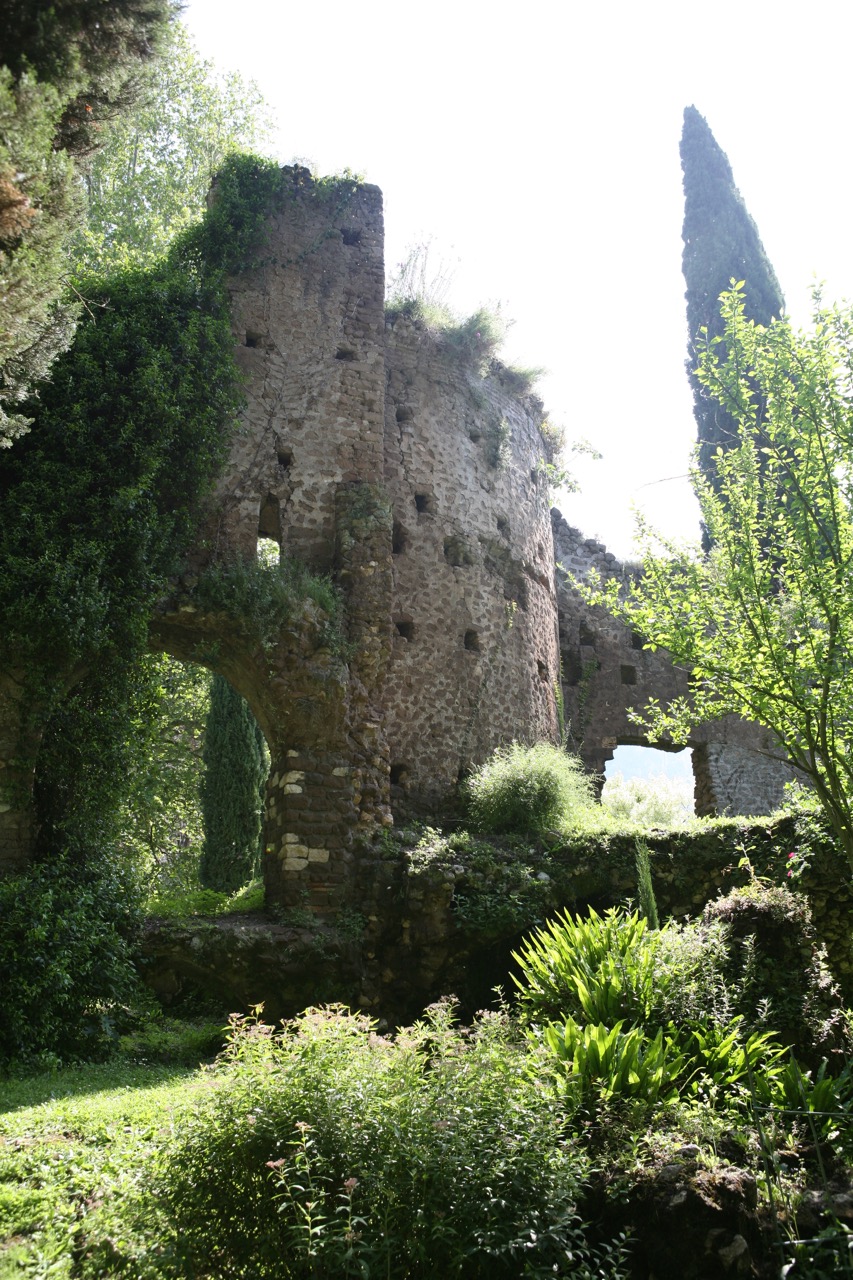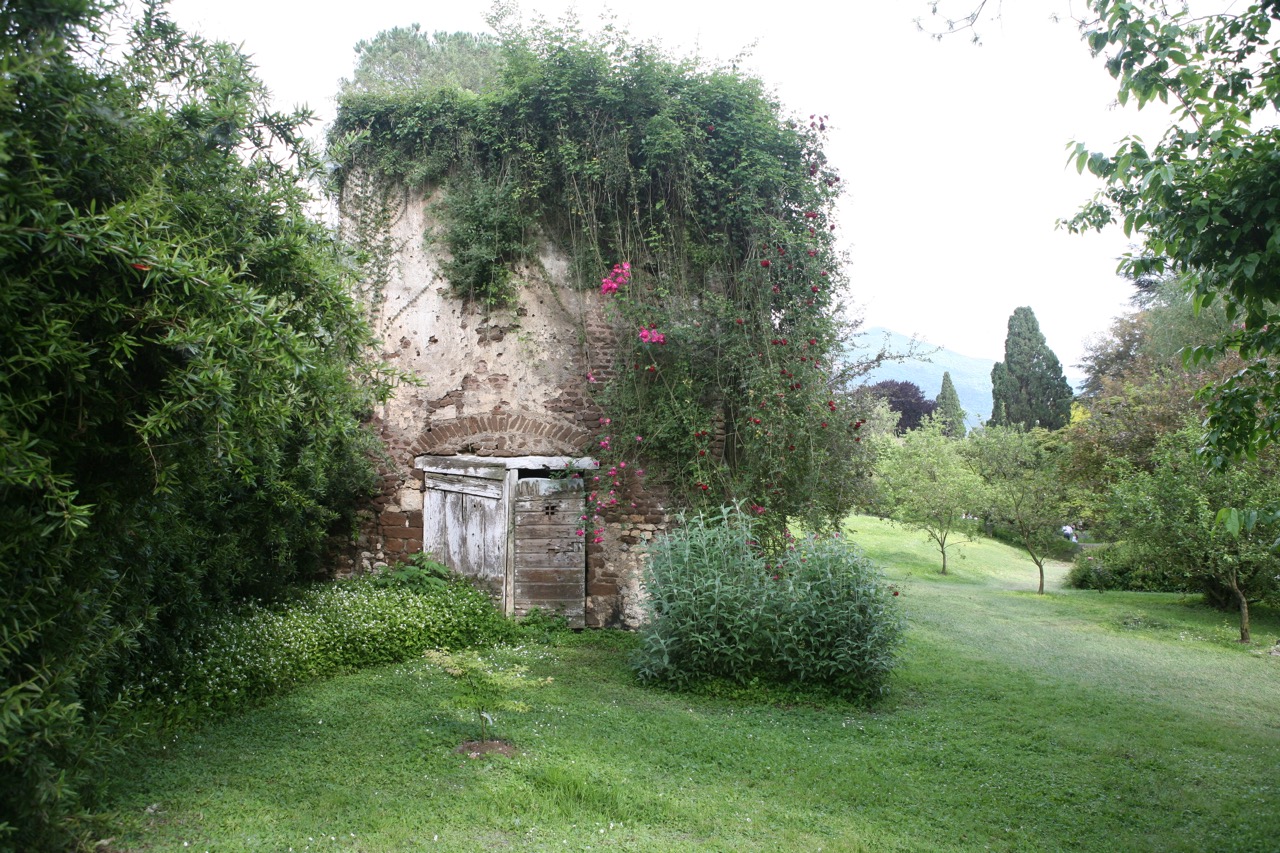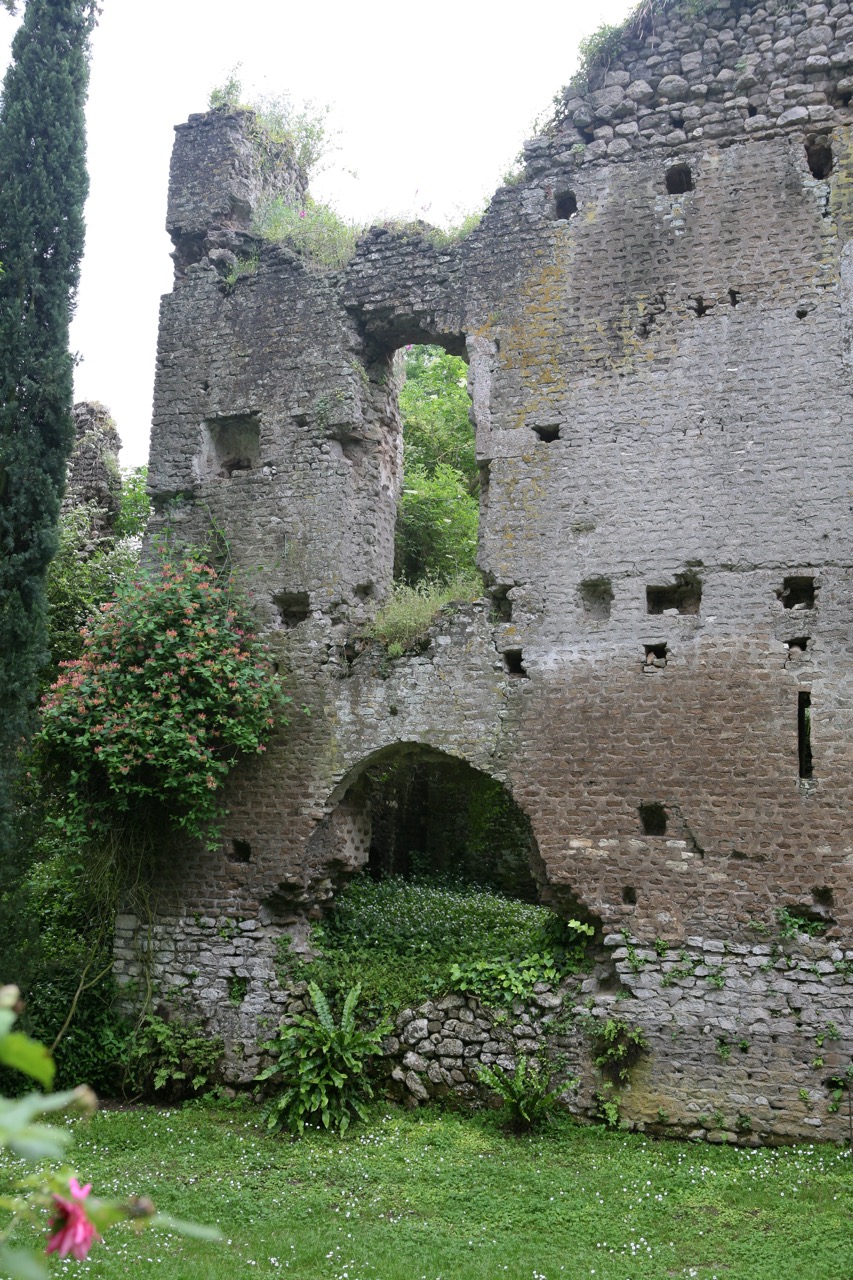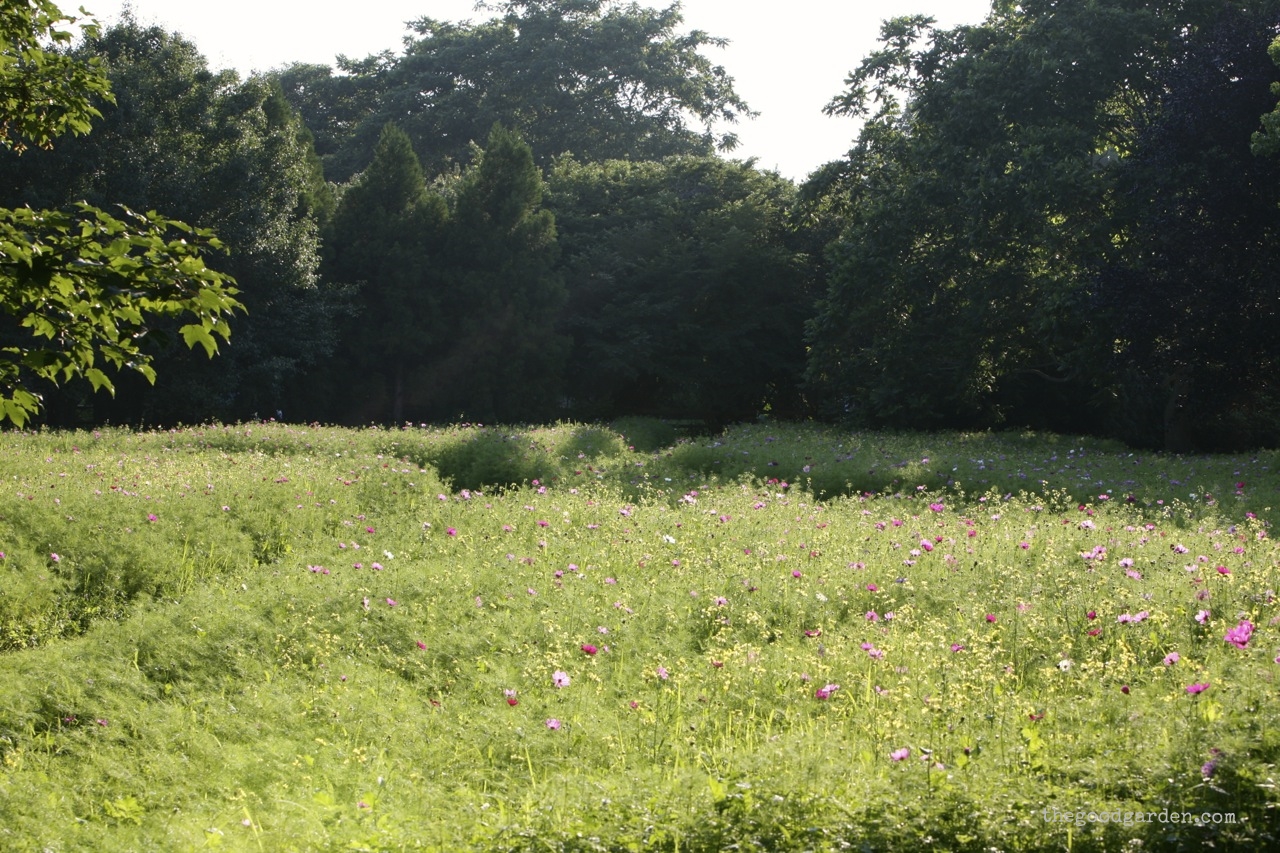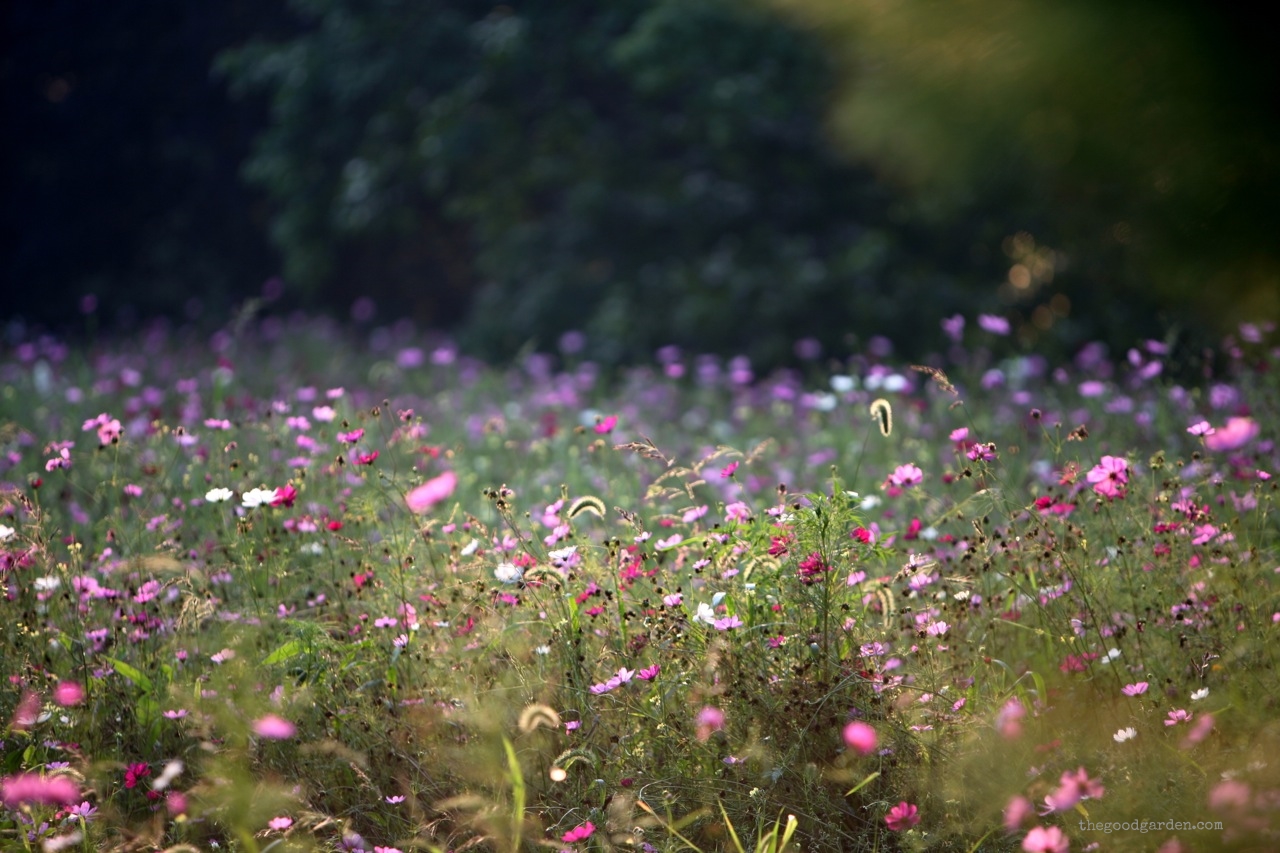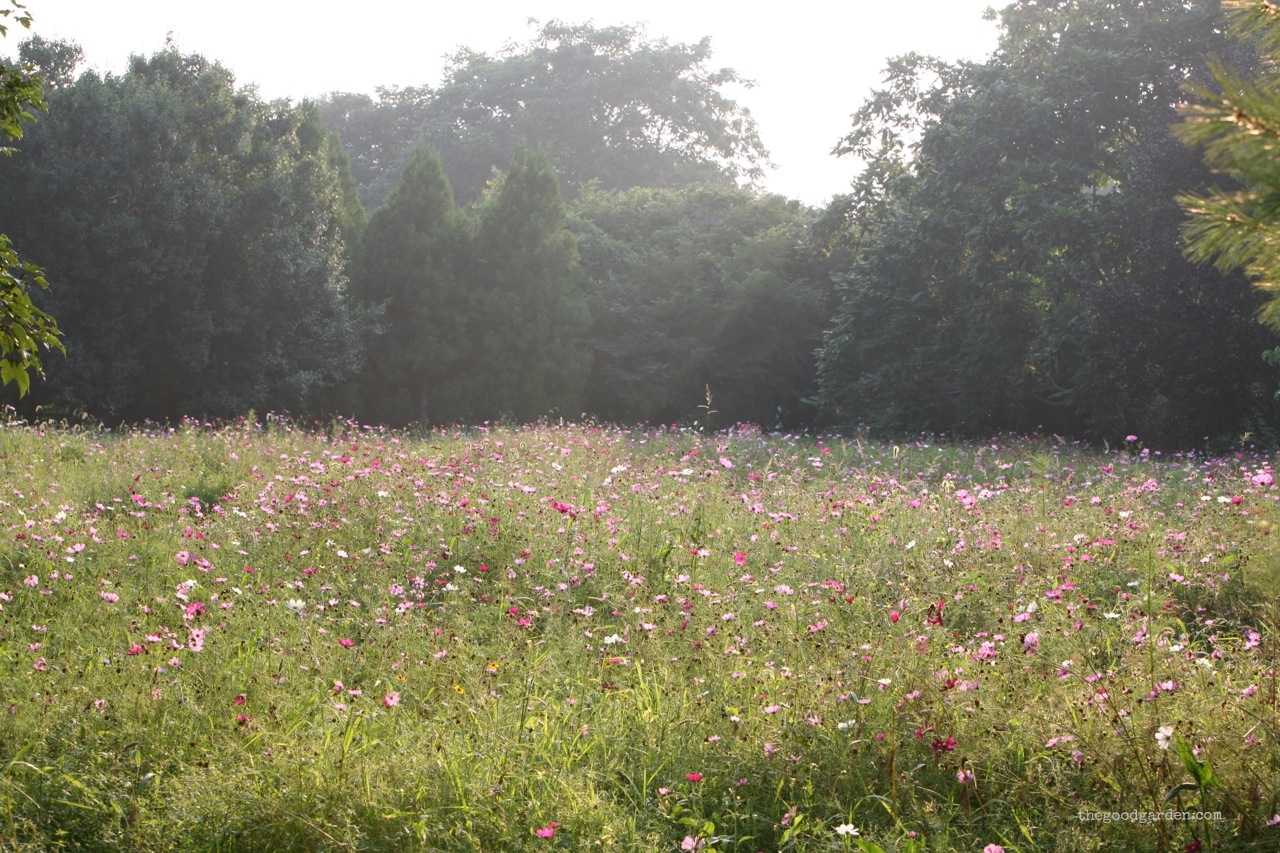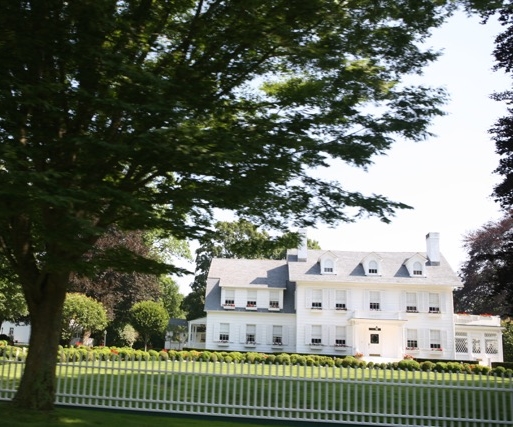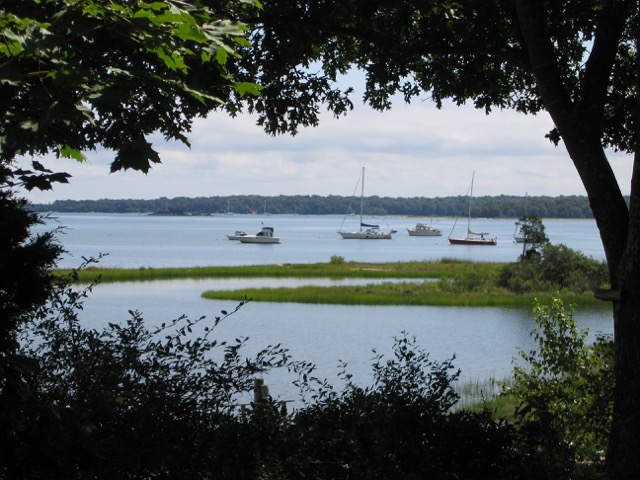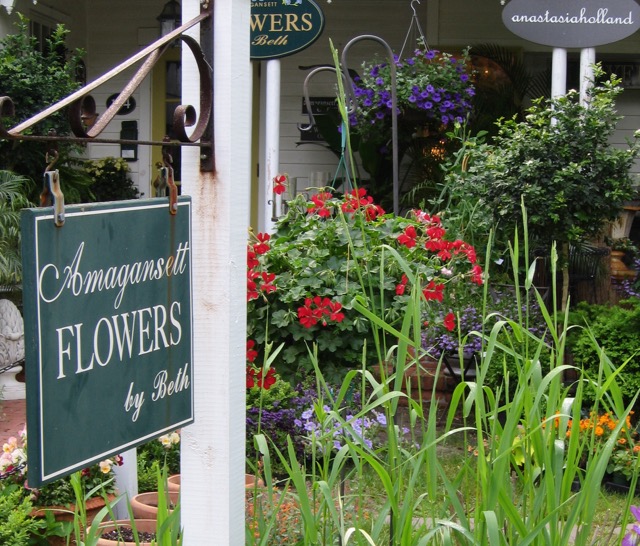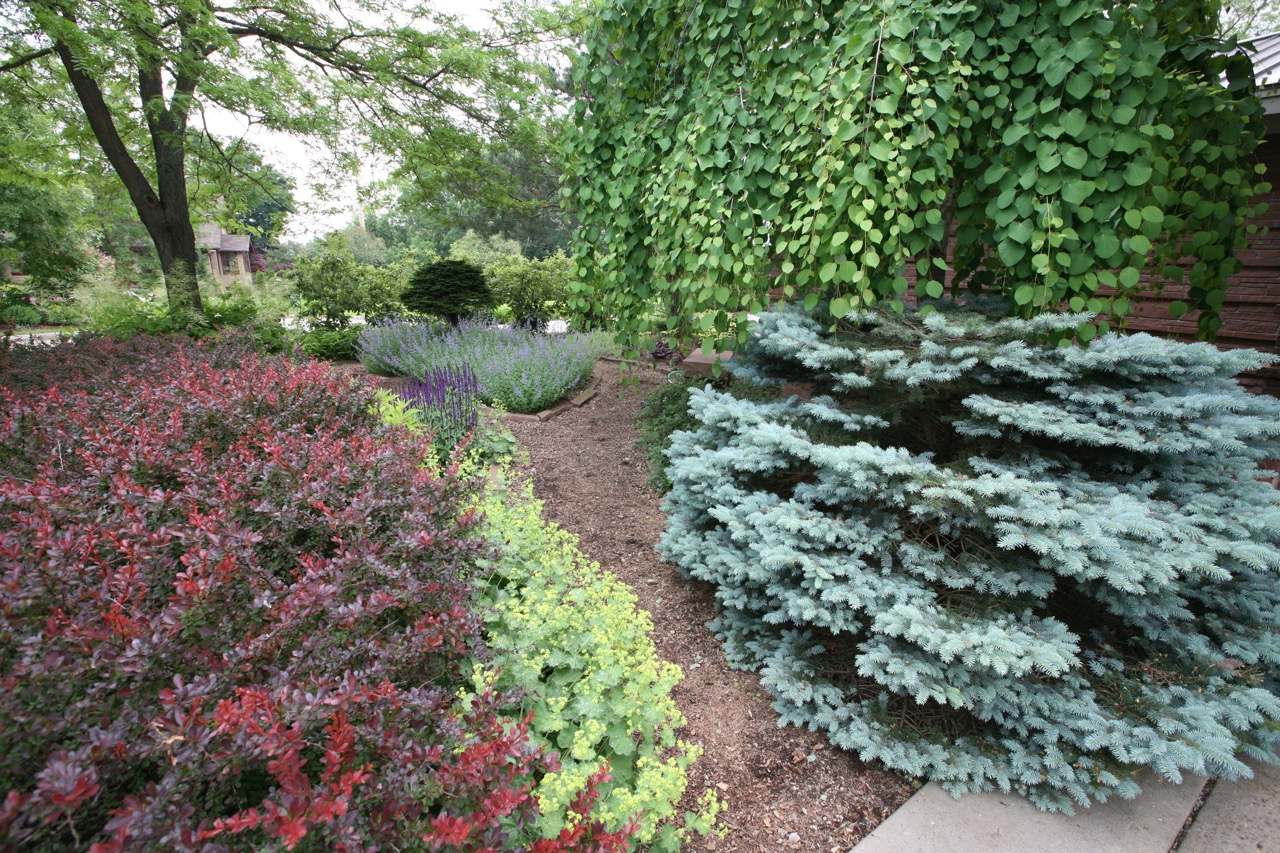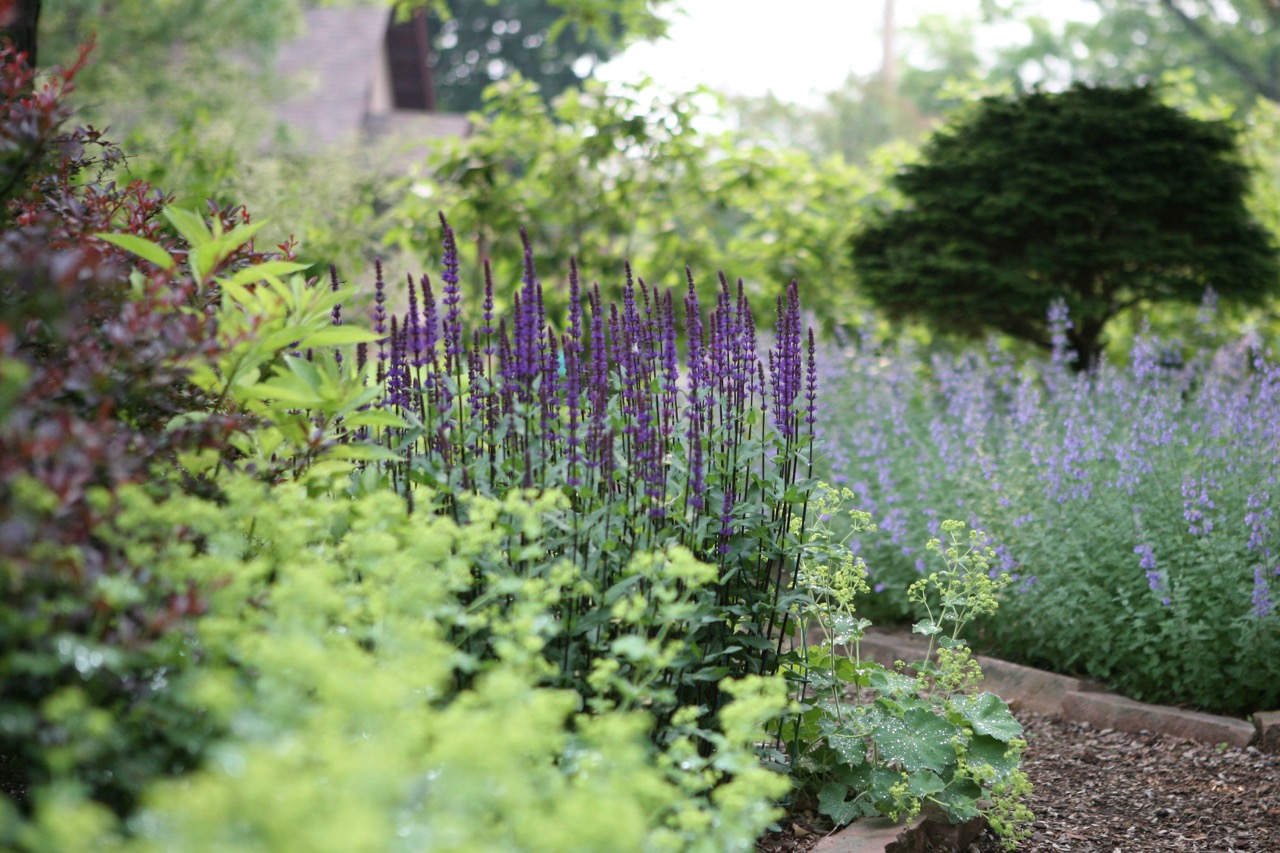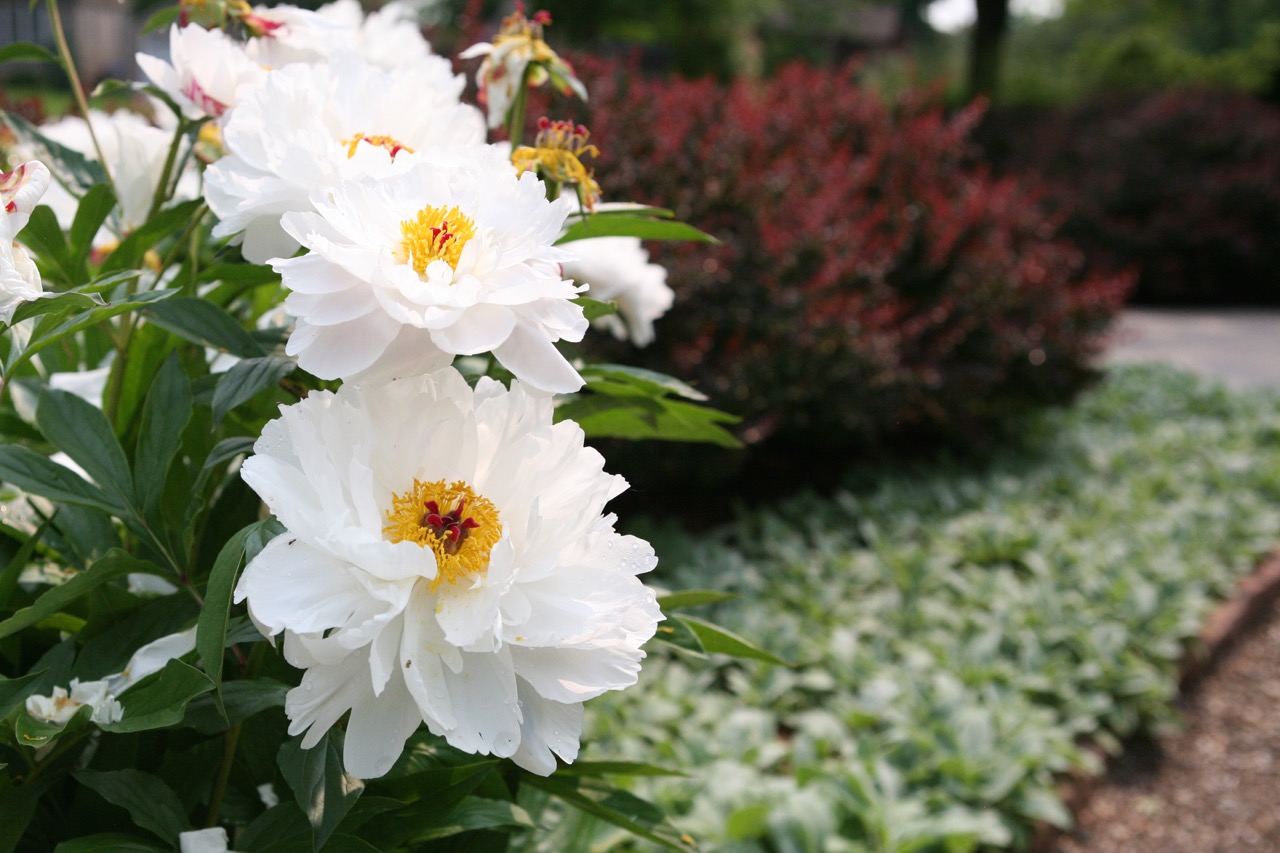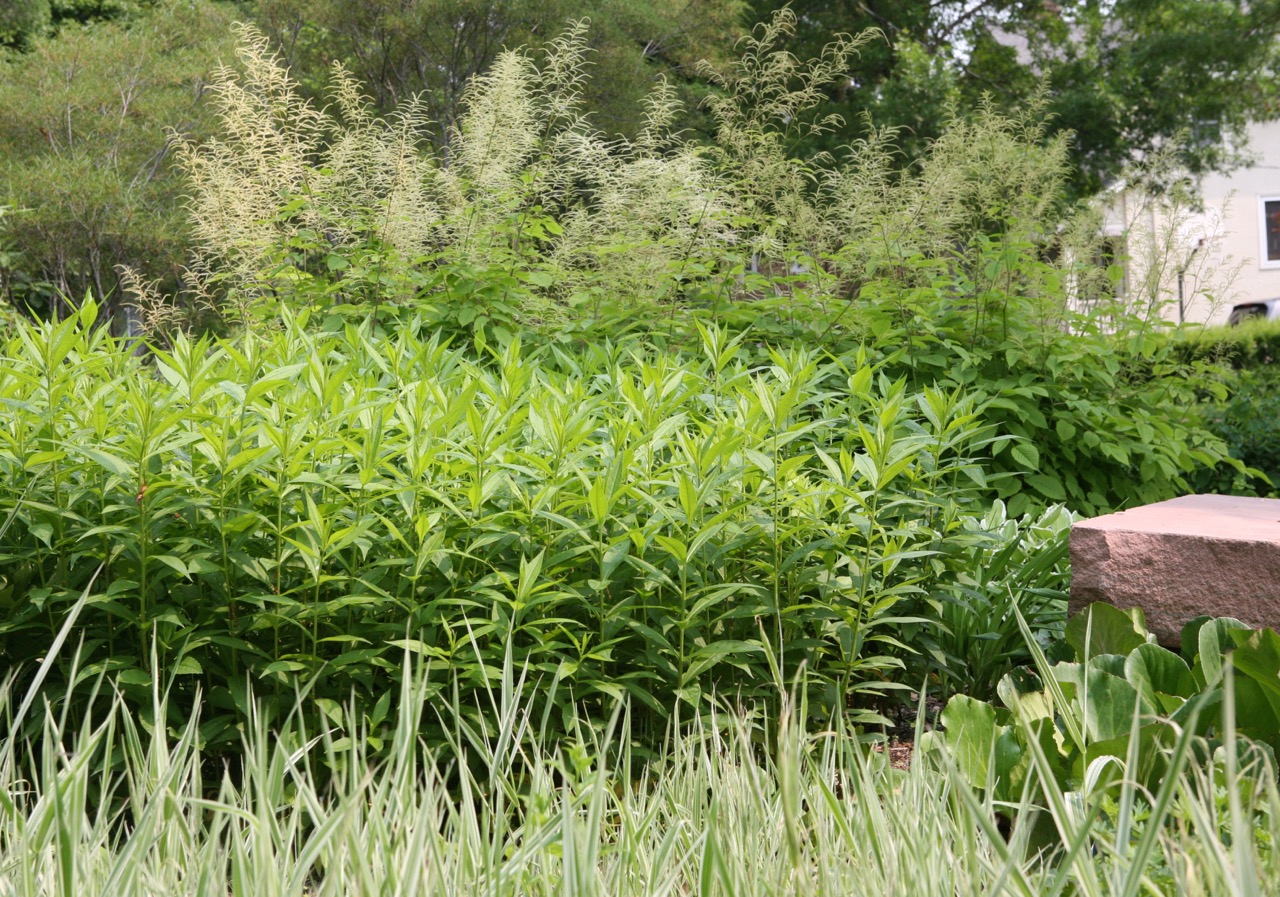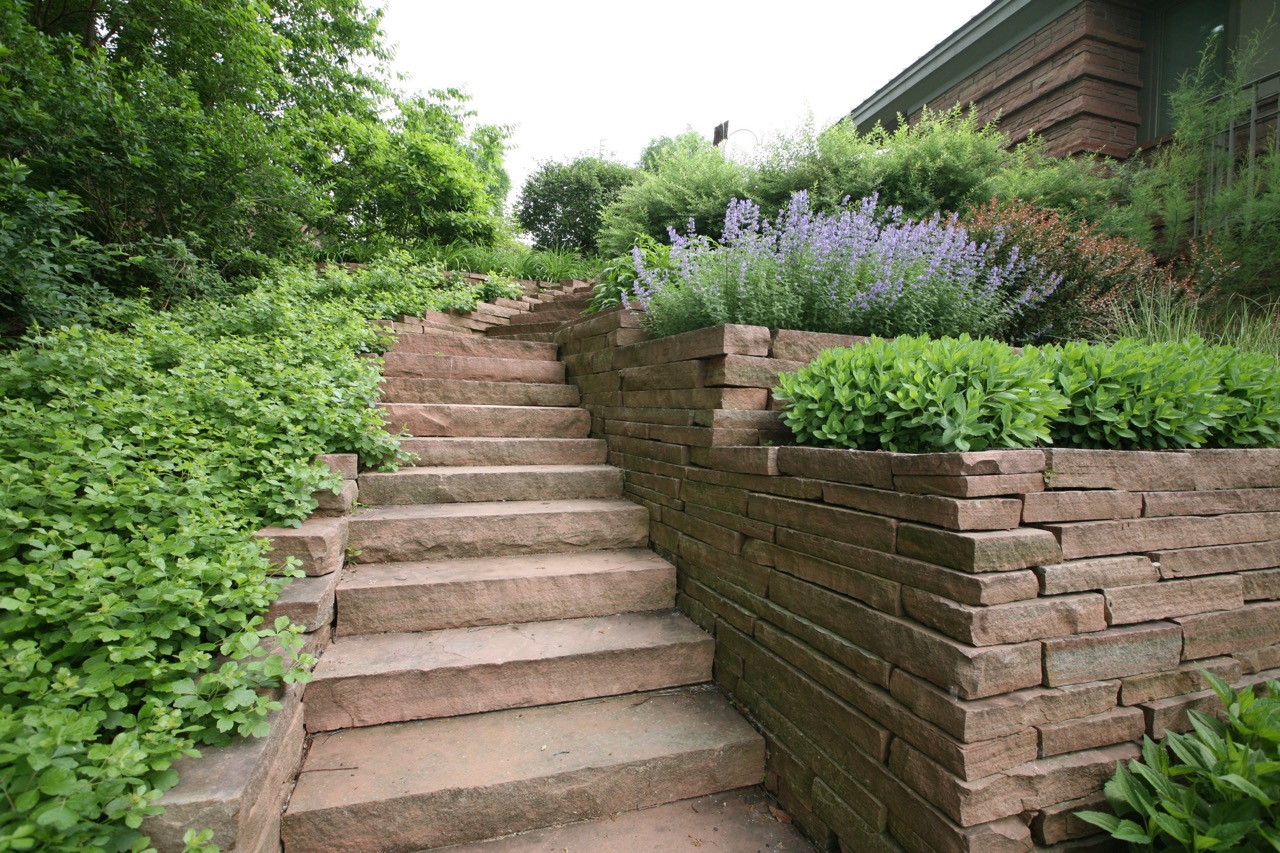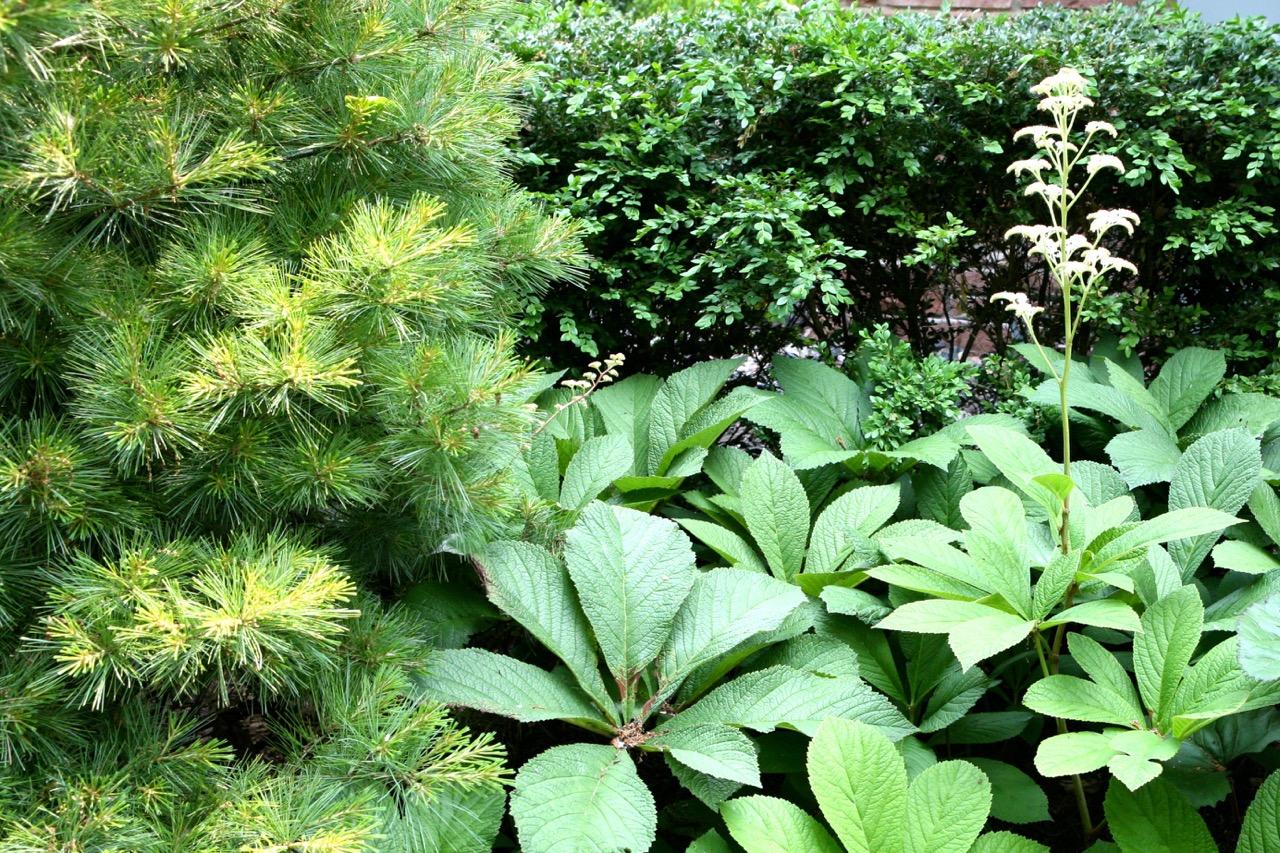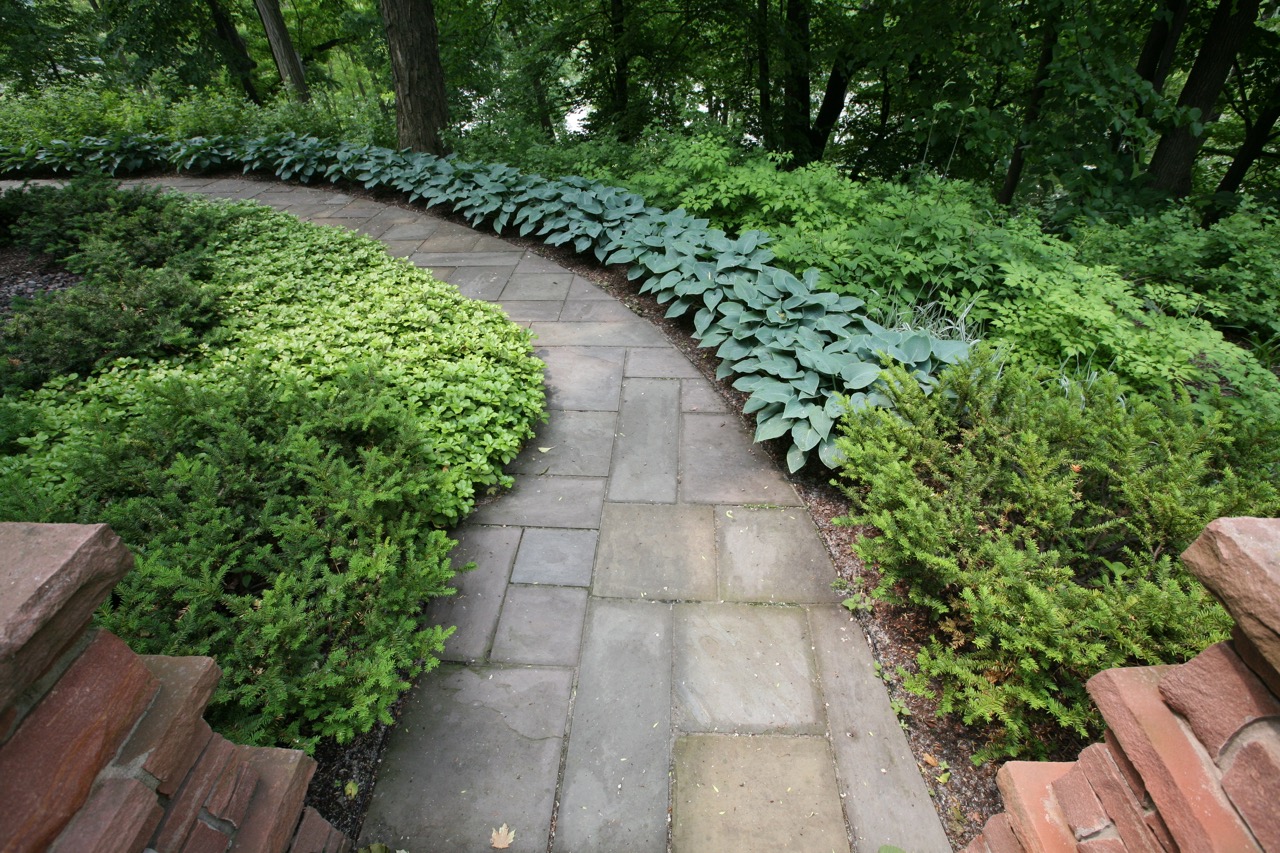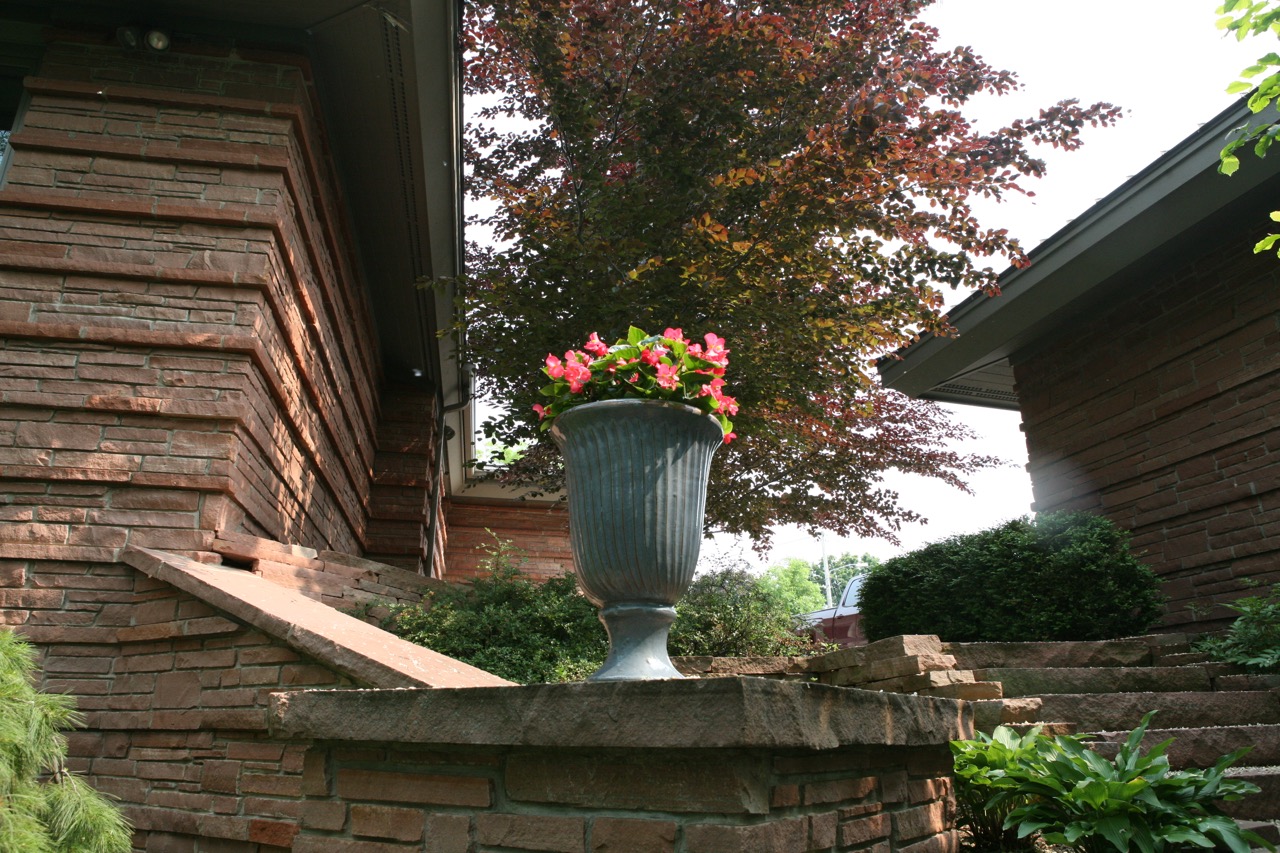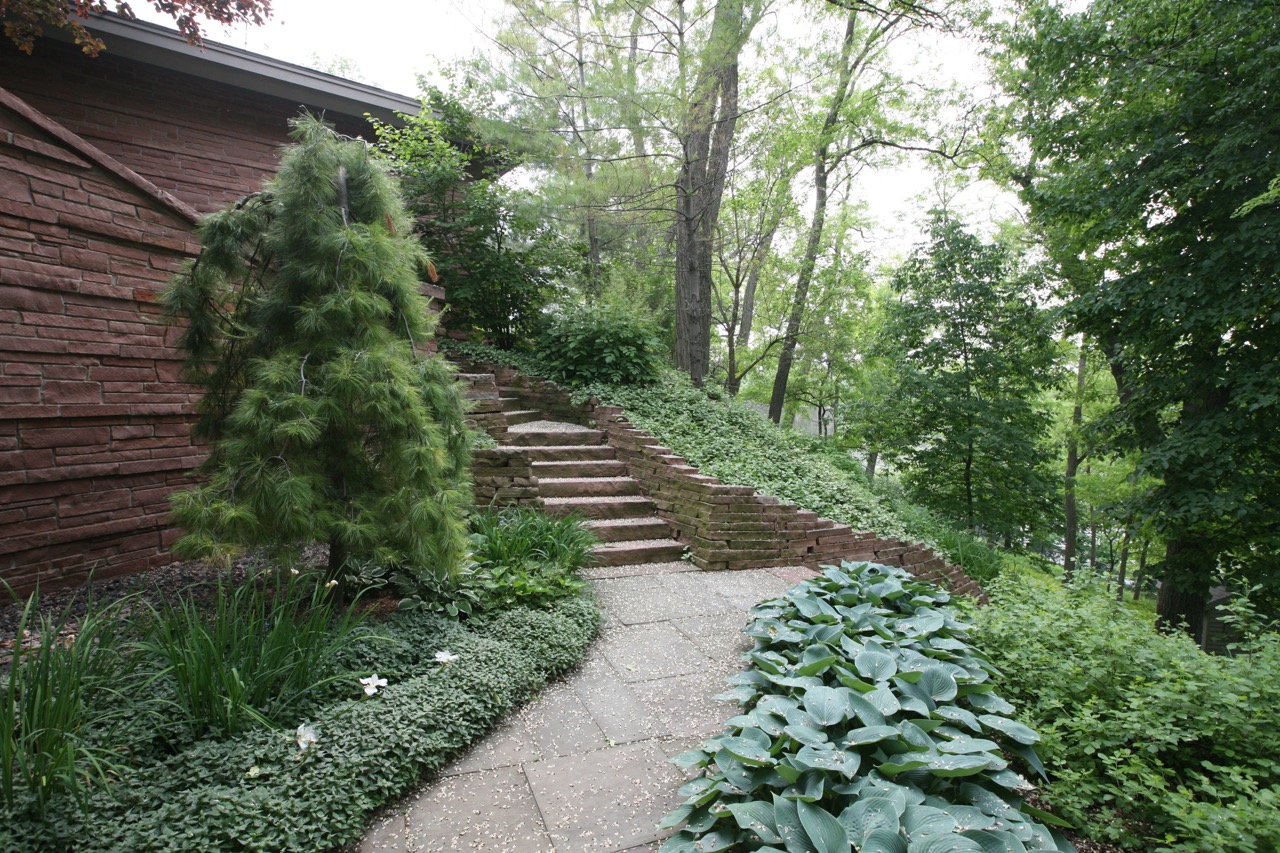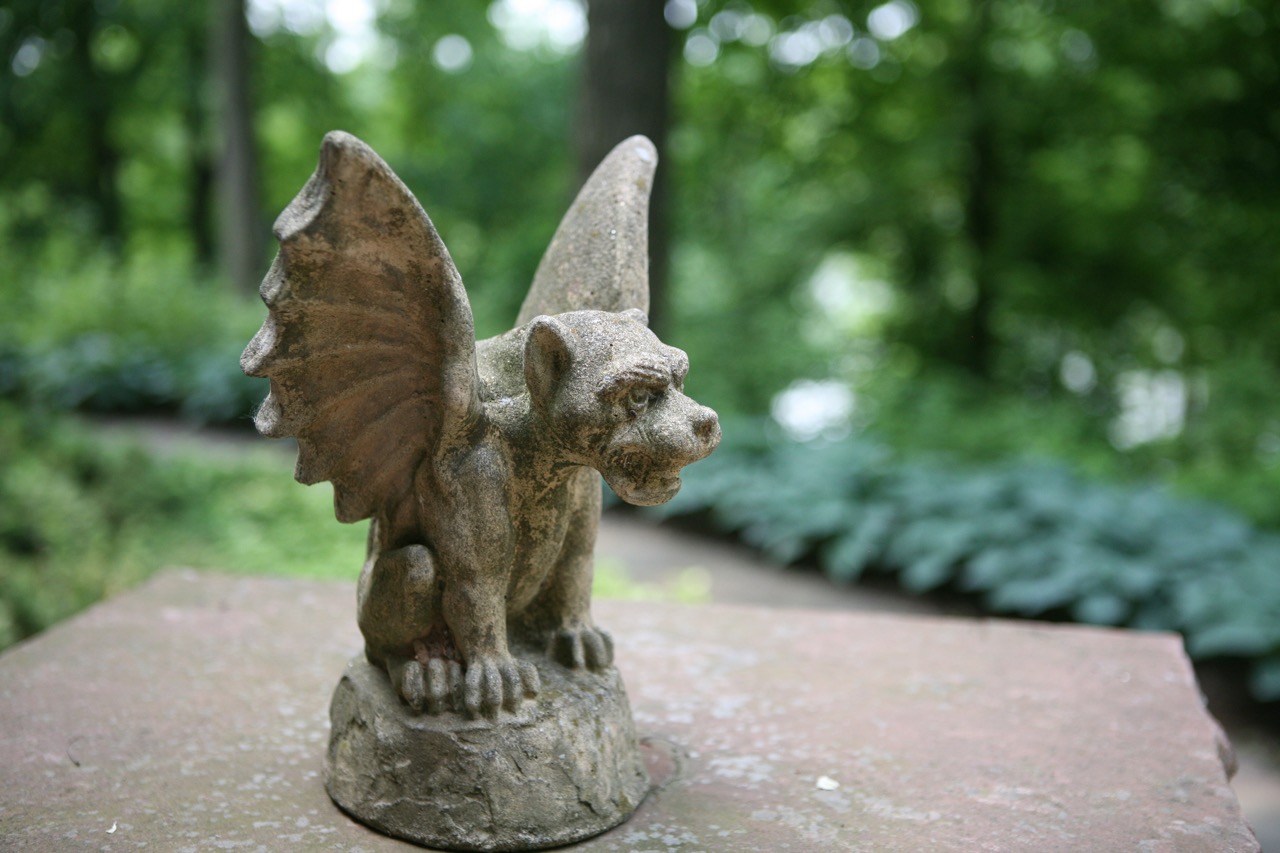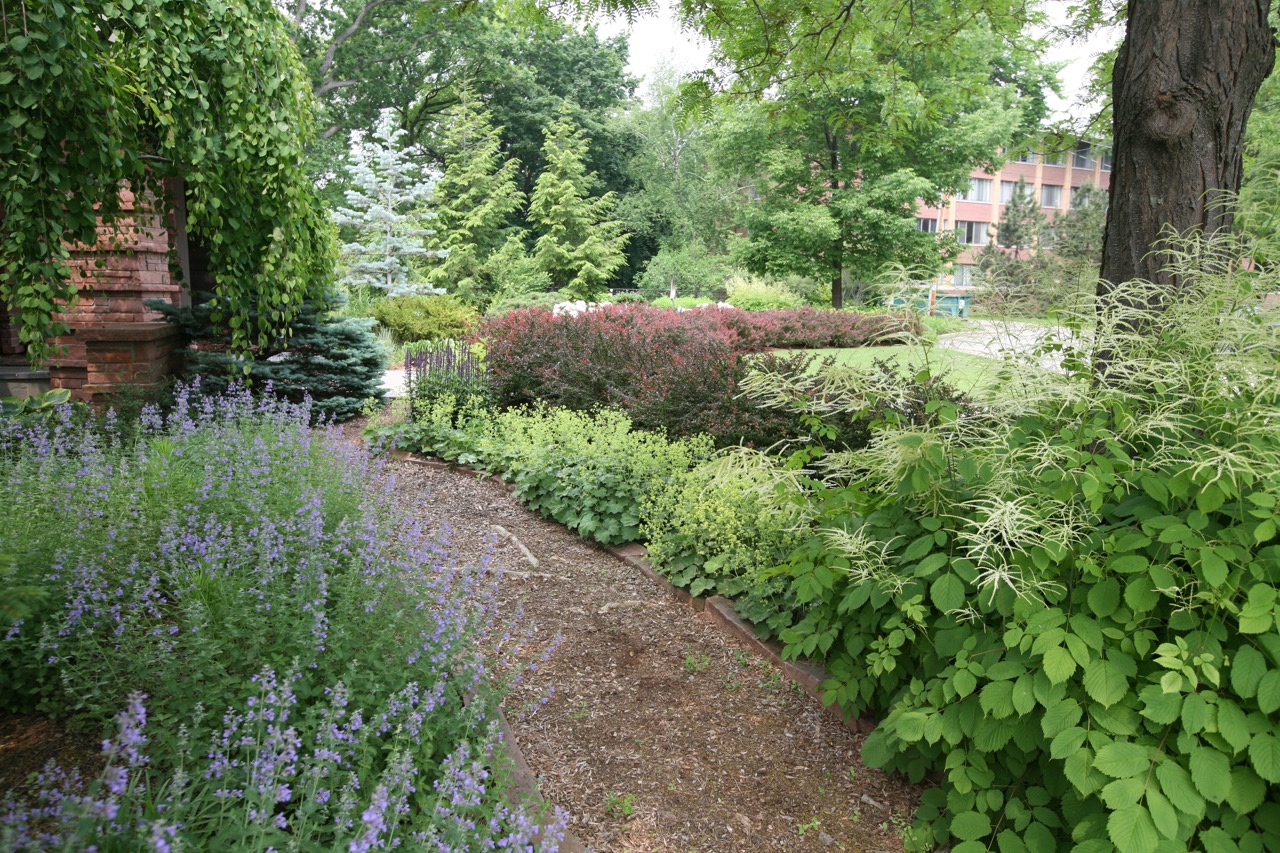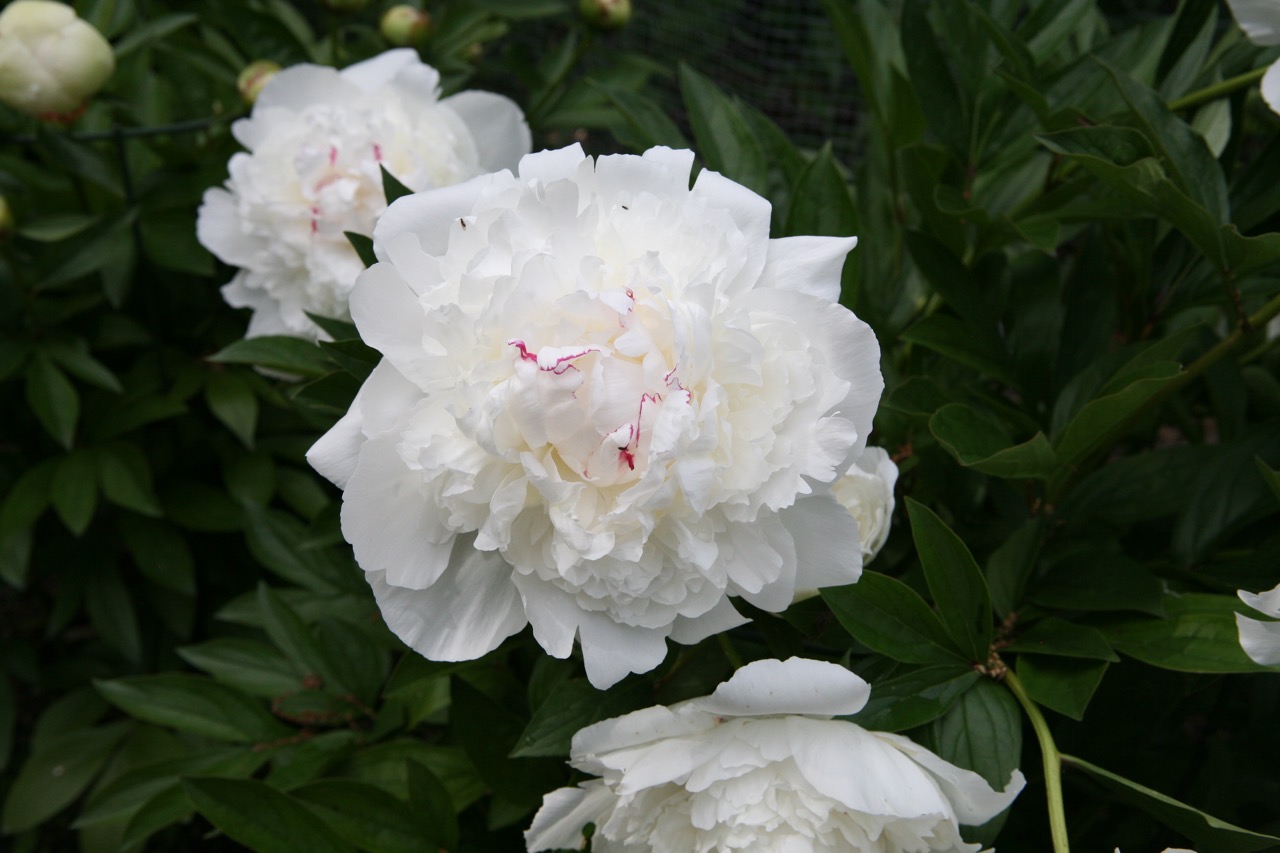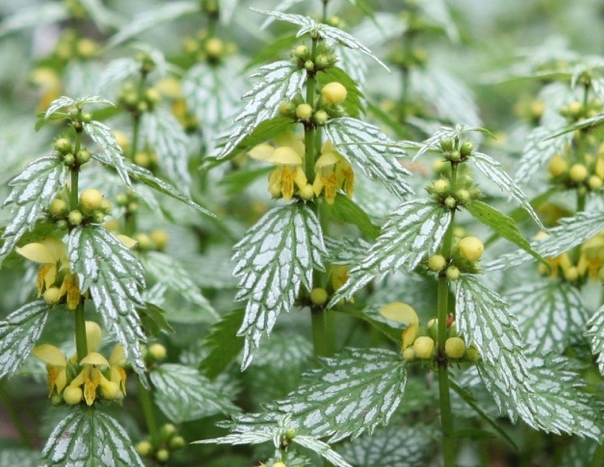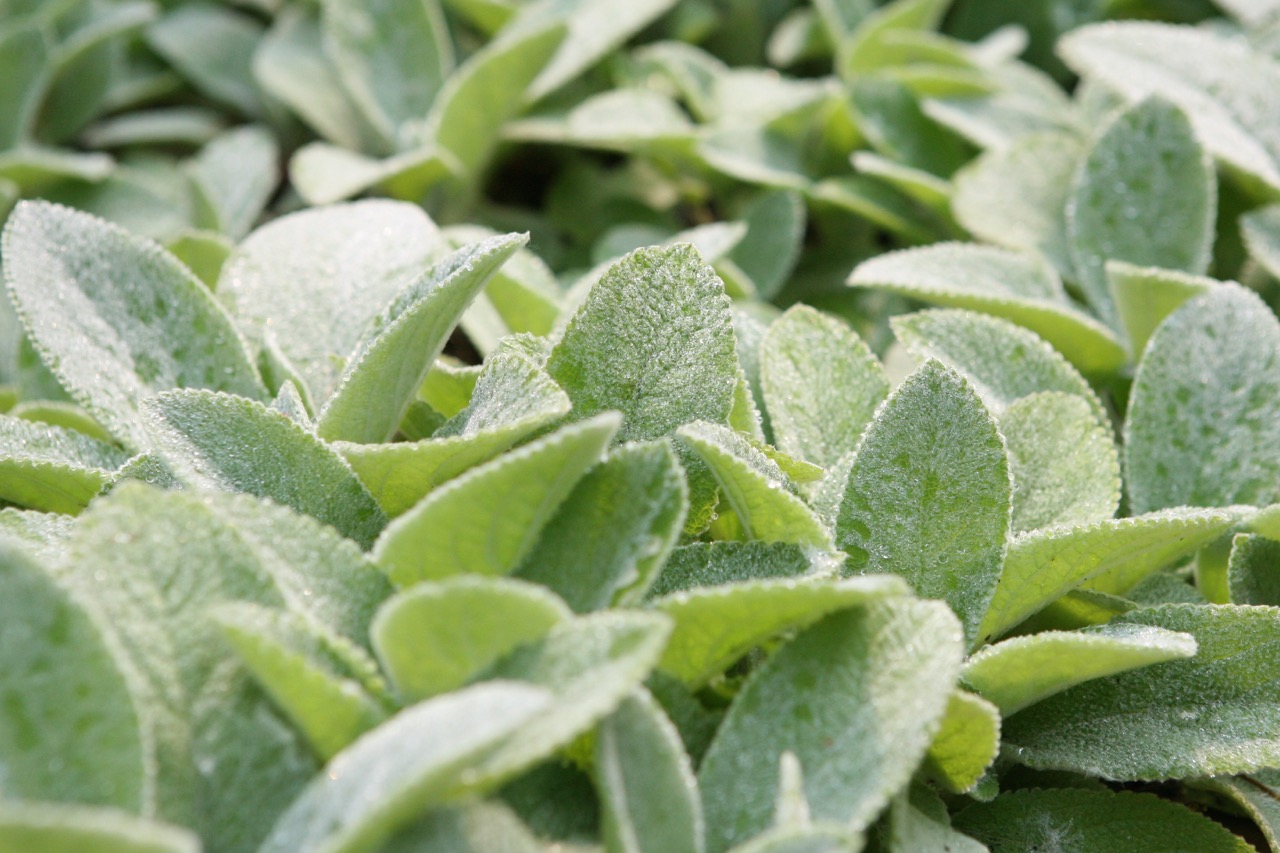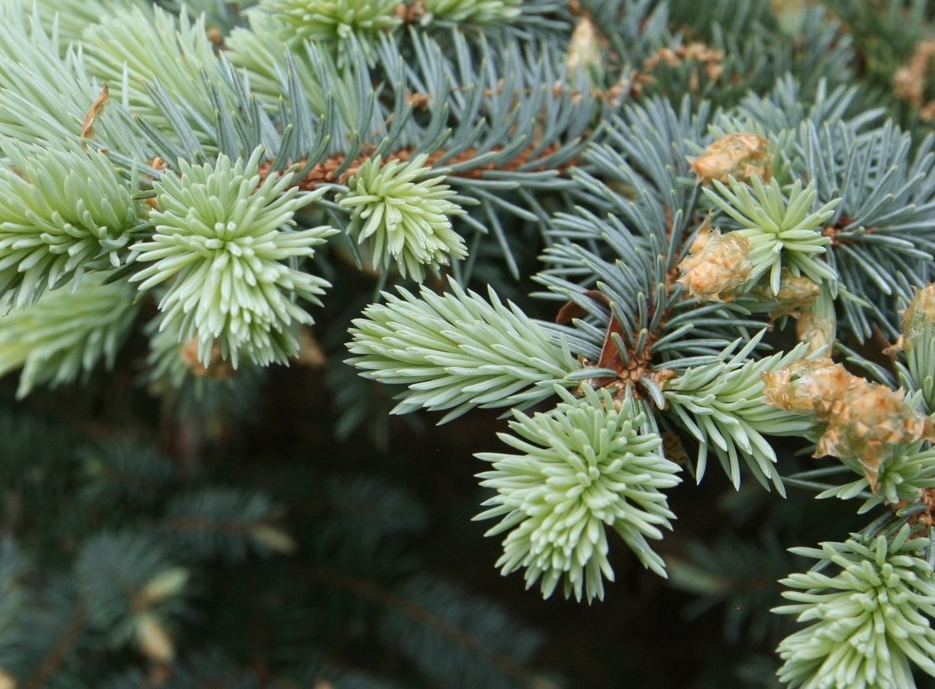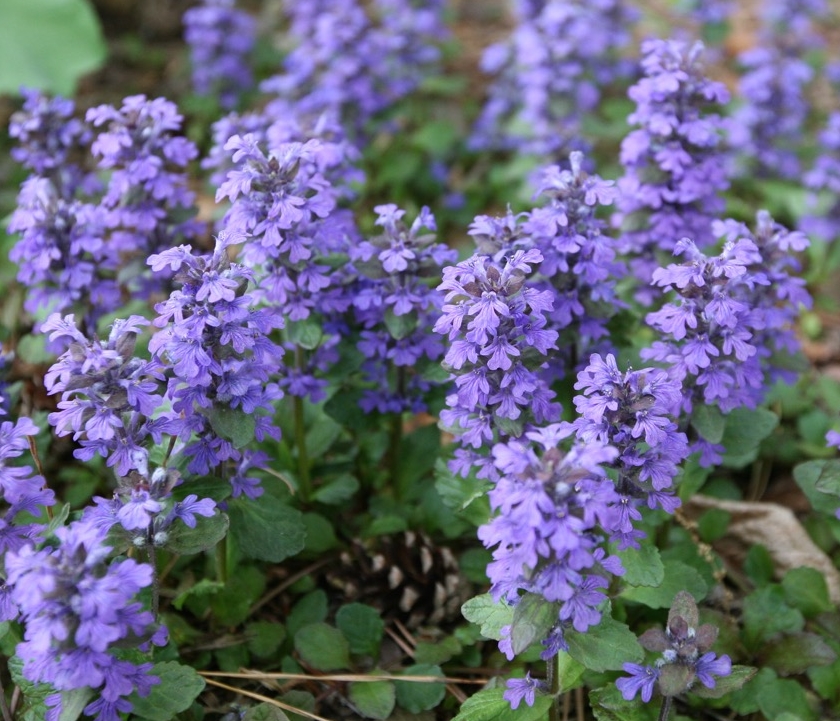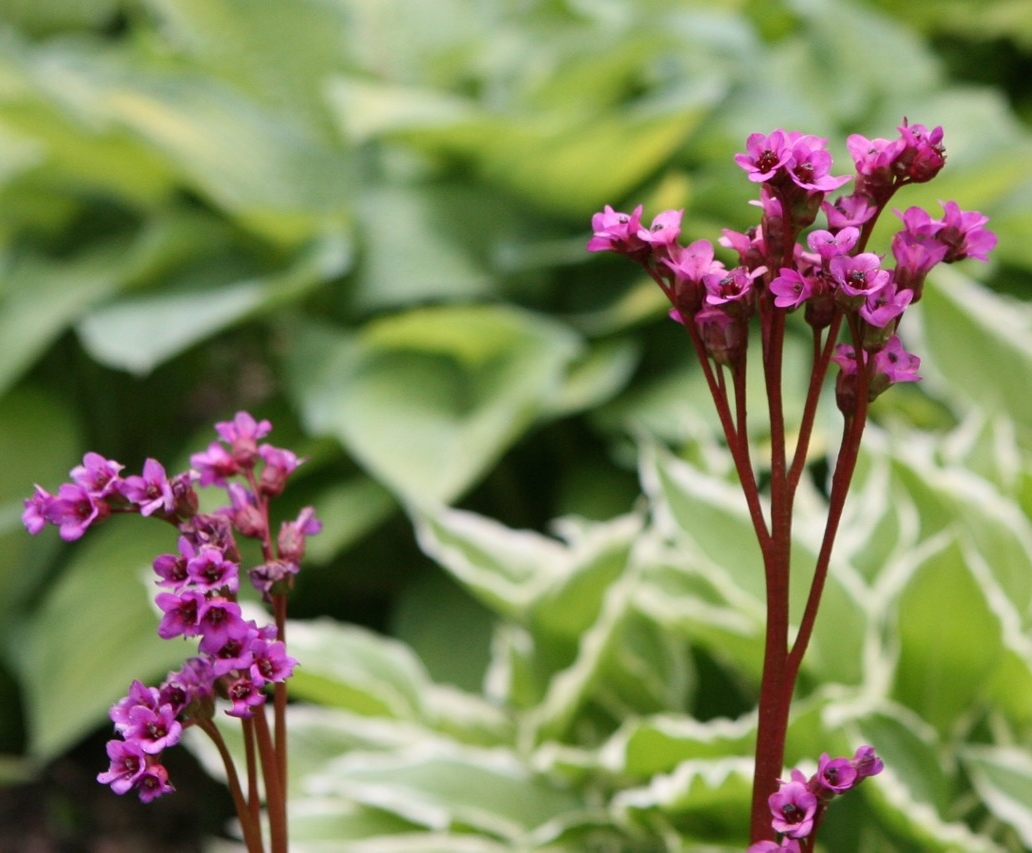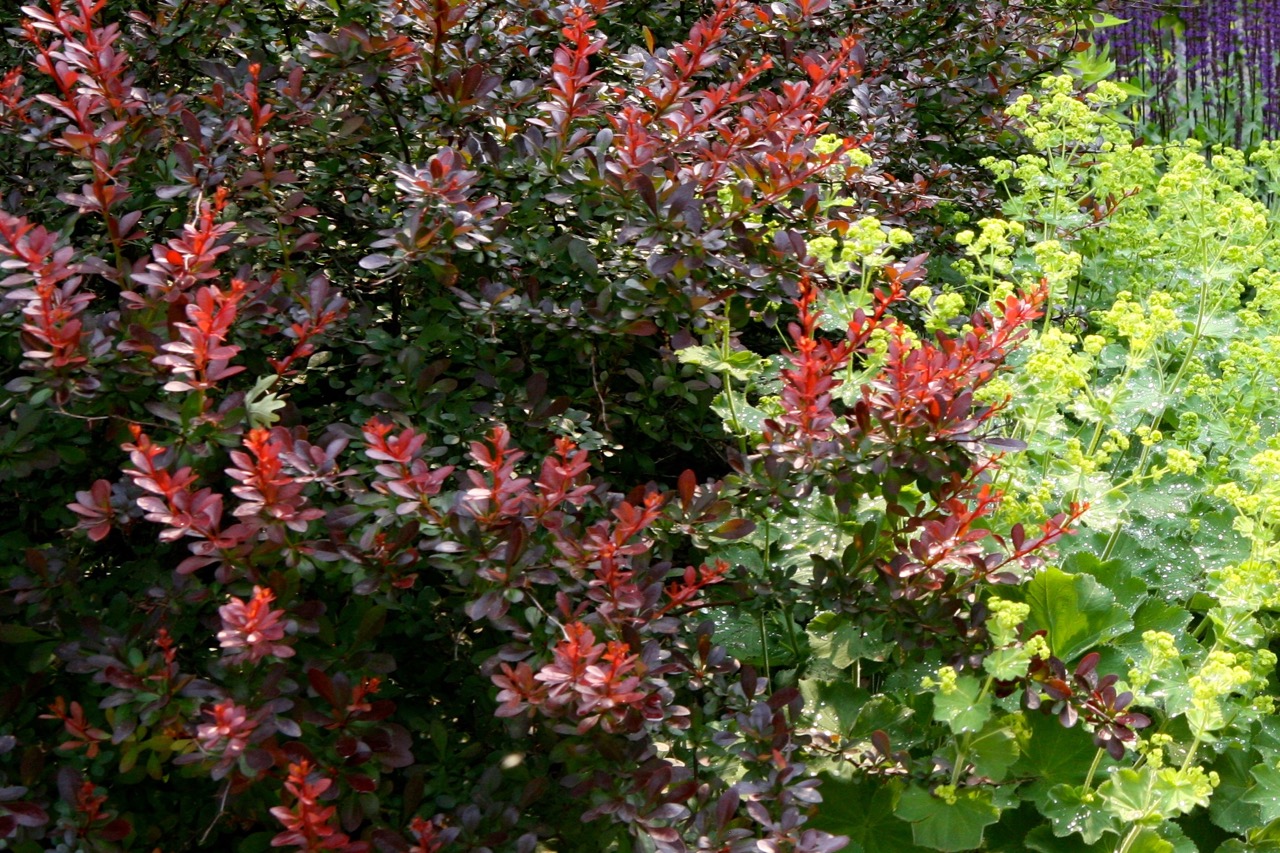Do you have a favorite romantic garden? For many people, the answer to that question is the Garden of Ninfa. (Definitely, one of my favorite.) This got me wondering, what is a romantic garden? “Scenic vistas, winding paths, bucolic meadows, and rustic retreats suitable for solitary contemplation are just a few of the alluring naturalistic features...
Read MoreA formal, wild meadow
I will never forget this formal, wild meadow garden in East Hampton, NY.
The Hamptons are famous for village lanes lined with mature sycamores, privet hedges, and arborvitae. Such plantings mark the separation between the private and public worlds. They provide shelter and privacy to personal gardens; shade and coziness to public spaces. Getting around means passing through these delightful lanes.
While walking back from the beach along one such lane, dense green walls on either side gave way to a burst of light and color. The setting sun streamed through this stunning meadow seen above; thousands of cosmos were backlit so they appeared to be floating paper lanterns.
This garden has the layout of a formal parterre, a geometric area divided by symmetrical paths. Its structure could easily fit into a French formal garden. A square space is framed by evergreens. Straight, criss-crossing paths meet in the middle of it to form a series of triangular beds filled with flowers. This formality unifies the garden, giving it rhythm and consistency.
What made this garden special was how the gardener’s plant choices and pruning restraint softened its structured layout. The evergreens were left to grow naturally; mown grass was used in the pathways instead of gravel; cosmos were selected for the flowerbeds and fell freely into the paths. A few grasses and daisies were allowed to pop up now and then, further softening the scheme. The power of this garden comes from its combination of formality, and what I suppose was inspiration from the wild.
Fashioned in the arts and crafts style, this garden is one room in a series of gardens: more formal outdoor areas near the house provide space for entertaining; and this garden in the far corner is looser, more naturalistic.
As I plan my fantasy garden, a formal meadow like this one will fit in beautifully, especially since I will have limited space. I can create a defined area with paths for easy access to the flower beds, and at the same time enjoy the beauty and serendipity that only nature can provide. It will also face west so that the setting sun can wash over it.
See more arts and crafts gardens here.
Founded in 1648, East Hampton is one of the earliest English settlements in America. This area is known for beautiful beaches and bays, historic (and modern) homes, design shops, and wonderful garden centers.
A very personal thing
“I love being in my garden. There is movement and pause. Then another plant beckons and moves my eye further along, until it comes to rest on a shrub or tree. These ribbons of plants flow along the paths, taking their turn in the process.”
In my quest for inspiration from the garden next door, I am pleased to share Bonnie Buchanan’s Appleton, Wisconsin garden. Her garden is like a story. It has a clear beginning and a series of sections connected by a delightfully meandering garden path. Some elements build momentum and move us through; other features make us stop and reflect. Most of all: Bonnie’s is a gardener’s garden. Her love and knowledge of plants combines with her painterly ability.
Her affection for plants started in childhood. There were stories of her great grandmother Louise, whose vegetable garden provided for her immigrant family. But it was Louise’s cutting garden of tall flowers that captured Bonnie’s imagination. And Bonnie’s mom, Iris, tended her own garden “full of daisies and phlox, and a long pathway of roses.”
When Bonnie got serious about gardening she turned to other gardeners and books. “I learned by walking around my neighborhood. I took extensive notes on what thrived, what looked good with what. I remember seeing a home in Green Bay with masses of coneflowers, and a Door County garden with beds of yarrows in several colors. I had not seen plants massed like that and was so impressed. At another garden, they had put in flagstones with a curve that didn’t go anywhere. It was so visually inviting and made you look deeper. I also learned what colors I liked, a range of quiet, soothing colors.”
The front garden can be seen from down the street; it draws you in with a warm welcome. A barberry hedge marks the beginning of the planted garden.
Bonnie’s front garden can be seen from down the street; it draws you in and creates a warm welcome. A patch of mowed grass connects the garden to the rest of the neighborhood; then a bold barberry hedge marks the beginning of the planted garden. Just behind it, a stone lined path offers an invitation to enter. It is this path that forms the backbone of the garden. Geranium, lamb’s ear, and lamium are arranged in intertwined ribbons; one picks up where the other leaves off. Boxwood, Muji pine, and weeping spruce provide structure and offer places to rest the eye. Honey locust and hemlock create a sense of shelter. At each resting point, something catches your attention, draws you further into the garden. And the garden has been designed to look as good from inside as outside.
Perennials define this garden. Bonnie explains, “You invest in them and they become a part of your life. To see them up close, surviving these winters, welcoming you in the spring. They evolve: the leaves emerge first, then the stalks, then the closed buds opening into flowers. They bring so much pleasure. They take their time to renew, to return their strength into the roots, the earth, and then they go quiet. From a design standpoint, one must think about pacing the blooms, about where you plant your material. You have to consider color, movement, and shading. I have become so interested in that.”
Many of her plants have a deep personal meaning. “I have lily of valley from my great grandmother Louise. White variegated hosta from a dear friend has moved with me three times. My 35 year-old white peonies were originally planted by my son Gus. And the daisies are those my mom planted for me on my 50th birthday. Checking on these plants is a ritual that is important to me”.
Bonnie's plant palette ranges from soothing white, silver, and blue, to pops of purple and red.
Enlightened by her own mistakes, Bonnie urges new gardeners to be sensitive to the physical characteristics of their land: wind, water, and especially light. “Plants like sunshine. Even the shade lovers like a bit of sunshine. They’ll do a little better. “ Also, “I think people should embrace pruning. I learned this from more experienced gardeners, and it works. Some people are reluctant to cut off a blossom but many plants need this for their long-term health. I hate to see plants being replaced that could have been saved by thoughtful pruning.” And she is thoughtful about finding plants that will not just survive, but that will reach their full potential, “I never plant anything that doesn’t thrive in zone 4. I learned the hard way.”
“Most of all garden making should be personal. People should find in their gardens something that they want to express. Make the kind of garden that brings them comfort and joy. I am always pleased to be in my garden. I believe that people should feel the same about their own garden.”
Here’s to finding what works for each of us and getting inspiration from each other. Happy gardening!


